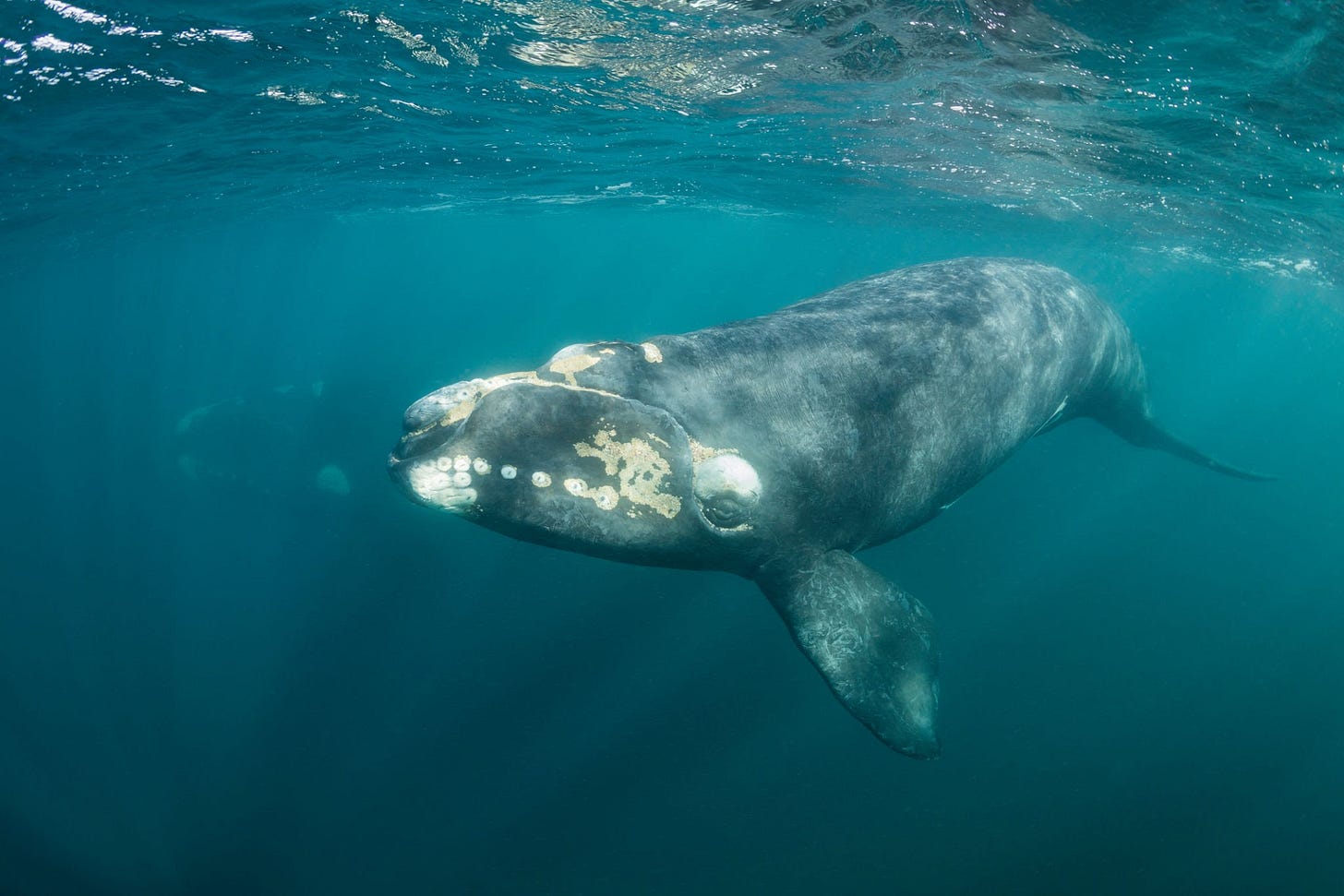Endangered Whales Unprotected With Wind Industry In Violation Of Sonar Limits, New Research Finds
The new investigation also found that the wind industry gave government wrong estimates of anticipated sonar levels
There is no evidence that industrial wind turbines cause whale deaths off the East Coast, says the US government’s National Oceanographic and Atmospheric Administration (NOAA), which is charged with monitoring oceanic conditions and protecting marine life.
“I want to be unambiguous: There is no information supporting that any of the equipment used in support of offshore wind development could directly lead to the death of a whale,” said a representative from NOAA in January of this year.
But now, a new investigation by Save the Right Whales Coalition finds that sonar activity from offshore wind lease areas is producing high noise levels at distances that violate the limits set by NOAA’s National Marine Fisheries Service (NMFS).
Acoustics experts say the sound levels measured are similar to those of a loud jackhammer being used outside of your home.
This is significant because research finds that when North Atlantic right whales encounter high sonar levels, they flee. In the case of the East Coast, that means they flee into areas of greater vessel traffic, a main cause of death.
Sonar also causes whale mothers and their calves to separate, say marine biologists. Whales use sound to communicate. If they get separated, they can’t see each other. And if they can’t hear each other, the calves can die.
The investigation also finds that the wind industry and the government have made wrong assumptions about noise levels. Lisa Linowes, who led the investigation for the Save the Right Whales Coalition, sent her findings to NOAA in an open letter.
There are only 340 North Atlantic right whales left, down from over 400 just a few years ago. A NOAA scientist warned last year that any additional boat or sonar traffic could result in the species’ extinction.
NOAA did not respond to Public’s request to comment on Linowes’ letter

The potential impact of the high-decibel sonar on whales is enormous, Linowes says.“Coast Guard data show roughly 15 separate sonar vessels are currently active within the New York and New Jersey wind lease areas,” she explains. “Each vessel may be producing sound levels that far exceed NMFS’s threshold standards for protecting marine life.”
Defenders of the wind industry say that 40% of whales likely died due to “human interaction,” such as entanglements in fishing gear, and none of the deaths were caused by wind turbine construction or operations.
But that 40% number is not accurate because it only refers to those whales on which a necropsy was performed. Notes NOAA on its website, "Partial or full necropsy examinations were conducted on approximately half of the [humpback] whales. Of the whales examined (approximately 90), about 40 percent had evidence of human interaction, either ship strike or entanglement."

Linowes says the data show that NOAA’s NMFS has misled the public about the efficacy of the wind industry’s efforts to mitigate the harm of sonar to the whales.
“NMFS has repeatedly claimed to the public that sufficient protective mitigations are in place,” she said. “In fact, the mitigations against Level B harassment (and potentially Level A impacts) imposed on applicants are not meaningful.”
In other words, the investigation reveals that the system designed to protect whales from extinction has broken down. NOAA’s NMFS, the body charged with their safety, has grossly neglected its duty to adequately monitor sonar levels, the first and foremost task of protecting the whales.
Why is that?
Bad Assumptions, Wrong Equipment, and Politics







